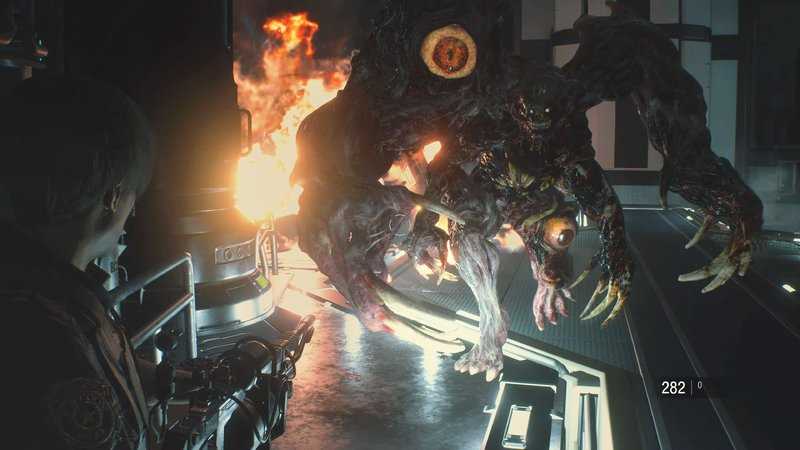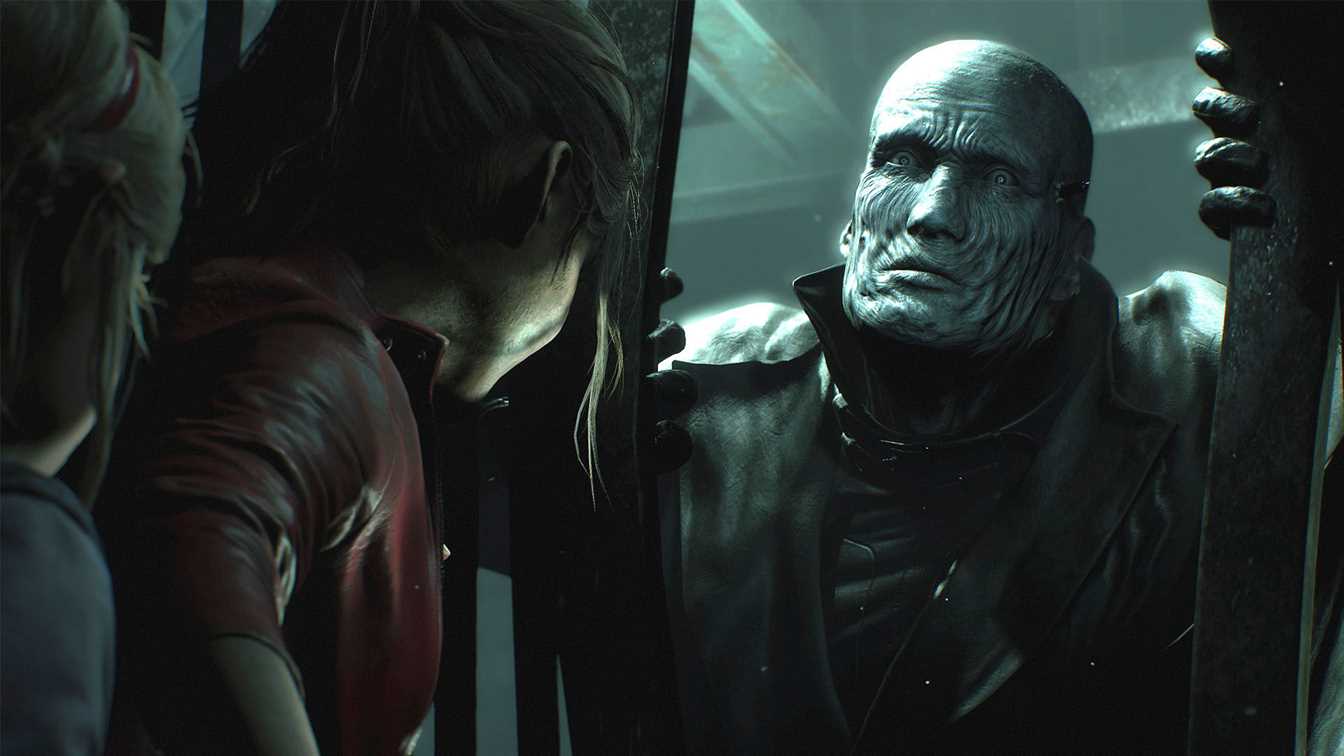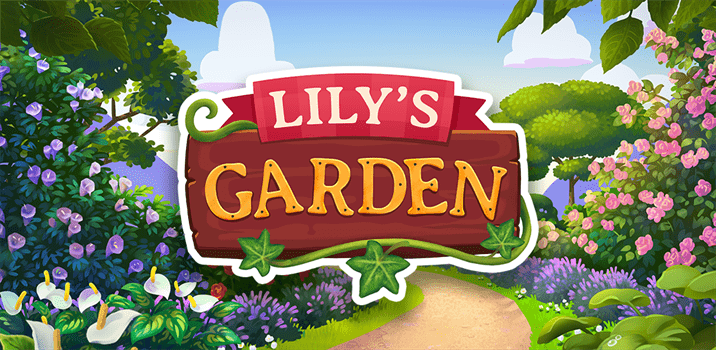10 Best Horror Games

From the dim light of arcades to the high-definition screens of today’s gaming consoles, best horror games have held a unique space in the world of entertainment. Whether it’s the lurking shadows, the sudden jump scares, or the eerie background scores, the genre has mastered the art of making our pulse race. But how did it all begin, what draws us towards this adrenaline-pumping genre, and how have developers used graphics and sound to accentuate the experience? Let’s delve deeper.
History and Evolution
The history of horror games is as rich and intriguing as the games themselves. While the late 1970s and early 1980s marked the inception of horror-themed video games, it was during the late 1990s and early 2000s that they truly blossomed.
The earliest inklings of horror in gaming could be seen in titles like Haunted House for the Atari 2600, which, despite its rudimentary graphics, managed to convey a sense of suspense. The game landscape shifted with the arrival of games like Alone in the Dark and Resident Evil, which didn’t just hint at horror but embraced it. Players were no longer just moving pixels on a screen; they were survivors in a world filled with undead zombies, grotesque monsters, and unsolvable mysteries.
Over the decades, as technology progressed, so did the complexity and depth of these games. The boundaries between player and character blurred, making the horror experience more personal and visceral.
Psychological Appeal of Horror Games
At a cursory glance, it might seem paradoxical. Why would anyone want to experience fear for entertainment? The answer lies deep within our psyche. Horror games serve as a safe space for us to confront and tackle our deepest fears. Unlike real-life threats, the challenges in a game have solutions, giving players a sense of accomplishment. There’s also the sheer thrill of adrenaline. Just as roller-coasters use gravity to provide a physical rush, horror games use narrative and gameplay mechanics to produce a psychological one.
Moreover, horror games often touch upon themes of survival, resilience, and morality, allowing players to test their limits and make choices in extreme situations. The emotional rollercoaster – the blend of fear, relief, triumph, and sometimes defeat – is what keeps players coming back for more.
Graphics and Sound: Building the Atmosphere
Imagine a horror game without its eerie background score, or a lurking monster without its detailed grotesque features. It doesn’t quite have the same impact, does it? Graphics and sound play a pivotal role in constructing the atmospheric dread that’s fundamental to the genre.
Developers leverage cutting-edge graphics to render hyper-realistic environments, from decrepit haunted mansions to fog-covered towns. These graphics, coupled with meticulously designed soundscapes, create an immersive experience. The creaking of a floorboard, the distant cry of an unknown creature, or the sudden silence before a jump scare, are all sound cues that keep the player on edge.
Game developers, like movie directors, understand that what’s left to the imagination can be as powerful, if not more so, than what’s shown explicitly. Shadows, silhouettes, and suggestive sounds often induce a stronger sense of fear than a full-blown monster reveal. It’s this masterful play of show and tell, light and sound, that turns a mere game into a spine-chilling experience.
In essence, horror games are more than just games; they are journeys into the darker recesses of our psyche, guided by the glow of a screen and amplified by the echoes of sound.
Top Picks: Best Horror Games of All Time
- Silent Hill 2 (2001): Regarded as a true masterpiece, Silent Hill 2 is often hailed as the pinnacle of psychological horror in gaming. Developed by Konami, this sequel takes players on a haunting journey through the fog-shrouded town of Silent Hill. The game’s somber atmosphere, unsettling creature design, and enigmatic storyline contribute to its lasting impact. James Sunderland’s quest to uncover the truth behind his wife’s death leads players into a realm of psychological turmoil, blurring the lines between reality and the supernatural.
- Amnesia: The Dark Descent (2010): Frictional Games’ Amnesia: The Dark Descent introduced a new level of horror to the gaming world. Set in a dark, foreboding castle, players assume the role of Daniel, a man with amnesia who must explore the eerie environment to recover his memories. The game’s focus on psychological horror and its “sanity” mechanics, which alter the player’s perception as fear sets in, create an unparalleled sense of vulnerability and fear.
- Resident Evil 4 (2005): Capcom’s Resident Evil 4 redefined the survival horror genre by blending it with intense action gameplay. Players guide Leon S. Kennedy through a village overrun by parasitic creatures, showcasing a balance between resource management, tense encounters, and intricate puzzles. The game’s atmosphere is heightened by its cinematic presentation, immersive environments, and iconic enemies like the chainsaw-wielding Dr. Salvador.
- Dead Space (2008): Developed by EA Redwood Shores (later known as Visceral Games), Dead Space takes place in a futuristic setting where players assume the role of Isaac Clarke, an engineer battling monstrous entities known as Necromorphs. The game’s strategic dismemberment mechanics, immersive HUD-less display, and claustrophobic environments create a spine-chilling experience. Dead Space stands as a prime example of effective sci-fi horror.
- Bloodborne (2015): FromSoftware’s Bloodborne marries the horror genre with its signature challenging gameplay. Set in the Gothic city of Yharnam, players navigate through a nightmarish world inhabited by Lovecraftian horrors. The game’s fast-paced combat, intricate lore, and mysterious atmosphere combine to create an experience that’s as terrifying as it is rewarding.
- Outlast (2013): Developed by Red Barrels, Outlast throws players into the depths of Mount Massive Asylum, armed only with a camcorder to capture the horrors they encounter. Focusing on stealth and psychological horror, the game’s found-footage style amplifies the tension as players must navigate dark corridors and evade deranged inmates. Outlast’s effective use of jump scares and unsettling imagery contributes to a heart-pounding experience.
- Alien: Isolation (2014): Based on the iconic Alien film franchise, Alien: Isolation puts players in the shoes of Amanda Ripley, who must survive the relentless pursuit of the Xenomorph aboard the isolated space station Sevastopol. Creative Assembly’s attention to detail, coupled with the unpredictable AI of the Xenomorph, creates an immersive and tense atmosphere where each encounter is a battle for survival.
- PT (Playable Teaser) (2014): Though not a full game, PT has left an indelible mark on the horror genre. A teaser for a canceled Silent Hills game by Hideo Kojima and Guillermo del Toro, PT showcases a looping hallway where players unravel a disturbing mystery. Its psychological horror, surreal visuals, and unsettling sound design make it a standout experience that still resonates with players.
- Layers of Fear (2016): Bloober Team’s Layers of Fear delves into the mind of a tormented painter, exploring his descent into madness as players traverse a constantly shifting mansion. The game’s psychological horror is accentuated by its exploration of the protagonist’s traumatic past, with a narrative that unfolds in a non-linear fashion. Surreal visuals, distorted reality, and a chilling atmosphere contribute to the sense of unease.
- Resident Evil 7: Biohazard (2017): Capcom’s return to the franchise’s survival horror roots, Resident Evil 7: Biohazard, revitalized the series. Set in a dilapidated plantation in Louisiana, players follow Ethan Winters’ search for his missing wife. The first-person perspective, visceral encounters, and intricate level design reinvigorated the franchise while delivering a terrifying experience that harkened back to the series’ origins.

Emerging Horror Game Trends
The realm of horror gaming has never been static. From its rudimentary 2D beginnings to the realistic 3D worlds we see today, the genre has constantly evolved, tapping into the latest technological innovations and narrative techniques. As we stand at the cusp of a new era in gaming, several trends are emerging, reshaping how we experience and perceive horror in the virtual domain. Here’s a closer look at some of the most prominent trends that are defining the future of horror gaming.
Virtual Reality: Immersing in Terror
Virtual Reality (VR) is changing the game (quite literally) for many genres, but its impact on horror games is particularly profound. VR headsets like the Oculus Rift, HTC Vive, and PlayStation VR transport players from their living rooms directly into spine-chilling environments, offering a level of immersion previously unattainable.
Imagine walking through a haunted mansion, where every turn of your head changes your perspective, and every creak behind you feels unsettlingly real. Or being trapped in a dimly lit room, the sense of claustrophobia amplified tenfold because the room feels like a tangible space. The 360-degree experience intensifies every aspect of horror, making even the subtlest of scares profoundly more terrifying.
Indie Horror Games: Fresh Takes on Fear
While big gaming studios have the resources to produce high-budget horror blockbusters, it’s often the indie developers who bring fresh, unconventional ideas to the table. Without the constraints of corporate expectations, indie developers experiment, innovate, and often take risks that larger studios might shy away from.
Games like Amnesia: The Dark Descent, Layers of Fear, and Soma are testament to the creative prowess of indie developers. These titles often prioritize atmosphere over action, psychological horror over gore, and storytelling over spectacle. In doing so, they offer unique experiences that stand out in an often-saturated market, reminding us that innovation in horror doesn’t always require deep pockets, but a deep understanding of fear.
Story-Driven Horror: When Narrative Meets Nightmare
Gone are the days when horror games were primarily about jump scares and combat. Today, an increasing number of titles are merging intricate narratives with horror elements, creating deeply engaging experiences that resonate with players on both an emotional and psychological level.
Take, for instance, the Until Dawn series or The Medium. These games intertwine compelling stories with horror, making players deeply invested in the fate of the characters. As players navigate the narrative, making choices that can alter the story’s outcome, the horror becomes personal. Every decision carries weight, and the scares are amplified because they threaten characters players have grown to care about.
The intertwining of narrative and horror also allows for richer world-building, character development, and thematic depth. It’s no longer just about surviving the night; it’s about understanding the darkness, both around and within.
Emerging Horror Game Trends
The horror game genre, much like the monsters it often portrays, continues to evolve and adapt, finding new ways to instill fear and excitement in its players. With advancements in technology and changing player preferences, there are a few notable trends that have been steadily rising to prominence in the world of horror gaming.
Virtual Reality: Immersing in Terror
Virtual Reality (VR) is changing the landscape of many gaming genres, but its influence on horror games is particularly palpable. No longer confined to observing horror through a screen, players are now literally placed inside these terrifying worlds.
With VR, every sound, every shadow, every movement feels more immediate and personal. Imagine hearing a whisper right behind you and being able to turn your head to see what’s there, or feeling the tension of hiding from a monster, not just with a controller but with your entire body. This kind of immersion intensifies the player’s connection to the game, making every scare more visceral and memorable.
Moreover, VR developers are experimenting with innovative mechanics tailored for horror experiences. This includes 360-degree exploration, binaural audio for precise spatial sound localization, and realistic interactions with the environment, further enhancing the sense of presence in these virtual nightmares.
Indie Horror Games: Fresh Takes on Fear
The indie game scene has been a breeding ground for creativity and innovation, and horror games are no exception. Independent developers, unburdened by the commercial pressures that big studios might face, often delve into unique, sometimes avant-garde horror concepts that mainstream games might shy away from.
Games like “Amnesia: The Dark Descent,” “Layers of Fear,” and “Soma” have set benchmarks in atmospheric and psychological horror. They often forego traditional combat mechanics, emphasizing vulnerability, and thereby increasing the sense of dread. With unique art styles, narrative depth, and innovative mechanics, indie horror games provide a fresh and diverse perspective on what it means to be truly terrified.
Story-Driven Horror: When Narrative Meets Nightmare
While early horror games often relied on simple premises, the modern era has seen a surge in story-driven horror experiences. Players aren’t just navigating haunted houses or evading monsters; they’re unraveling complex narratives, delving into character psyches, and uncovering dark, often poignant tales.
Games like “Until Dawn” or “The Medium” intertwine narrative and gameplay, making choices matter and shaping the story based on player decisions. This interactivity allows gamers to be more invested in the characters and outcomes, making the horrors they face even more impactful. As players get deeply engrossed in the unfolding story, every twist, turn, and terror becomes a part of a grand, often emotional, narrative tapestry.
Horror Game Mechanics that Amplify Fear
Horror games have an innate ability to grip players with an intense sense of dread and unease. It’s not just the unsettling atmospheres or terrifying monsters that make them so effective; the underlying mechanics play a crucial role in amplifying the fear factor. Let’s delve into some of these mechanics that have been masterfully used by game developers to elevate the horror experience.
Limited Resources: Enhancing the Threat
The feeling of vulnerability is central to many horror experiences, and one way games magnify this is by limiting the resources available to the player. By resources, we mean ammunition, health items, save points, and even light sources like batteries or matches.
Games like “Resident Evil” and “Silent Hill” have made inventory management a nerve-wracking task. With only a few bullets left and a horde of creatures lurking nearby, players are forced to make difficult decisions. Should they engage and risk wasting precious ammo or attempt to evade and conserve? This constant calculation heightens tension, ensuring players never feel entirely safe or prepared for the dangers ahead.
First-Person Perspective: Seeing Through the Eyes of Fear
Switching to a first-person perspective makes everything more personal. Horror games using this viewpoint, such as “Outlast” or “P.T.”, immerse players by presenting everything from the protagonist’s eyes. There’s no disconnect; what the character sees, the player sees, making every shadow or sudden movement a direct threat.
In first-person horror games, there’s also the dreaded “what’s behind me?” factor. The limited field of view means players can’t see threats approaching from the sides or behind, creating a pervasive sense of paranoia. Every time players turn around, there’s the anxiety-laden anticipation of possibly facing something terrifying.
AI-Driven Enemies: Unpredictability and Terror
Predictable enemy patterns can dull the sense of fear, as players quickly learn how to evade or confront threats. Enter AI-driven enemies, which bring a level of unpredictability that keeps players on their toes.
Games like “Alien: Isolation” employ this mechanic to great effect. The Xenomorph in the game doesn’t have a fixed patrol route. Instead, it actively hunts the player, reacting to noises, changes in the environment, and even the player’s tactics. This dynamic AI ensures that no two encounters are the same, and players can’t rely on memorized patterns. The unpredictability means that players are always apprehensive, never quite sure of when and where the next threat will emerge.
Creating the Perfect Horror Game Atmosphere
A genuine horror experience in gaming isn’t solely about jump scares or grotesque monsters. At the core of every memorable horror game lies a meticulously crafted atmosphere that envelops players, making their pulse quicken and sending shivers down their spine. Let’s delve into the elements that game developers masterfully combine to create that perfect horror ambiance.
Design and Graphics: Building the Uncanny Valley
Visuals play a pivotal role in setting the tone for a horror game. A well-designed game environment can evoke feelings of dread, unease, and anticipation. The uncanny valley—a concept where humanoid objects appear almost, but not quite, lifelike—can be a powerful tool when used correctly.
By intentionally designing characters or environments that sit in this unsettling space, developers can provoke an instinctive sense of discomfort. Games like “Dead Space” or “Until Dawn” use graphics that blur the line between the familiar and the alien, making players feel off-balance and perpetually unsettled. The eeriness of seeing something almost human, but not quite right, is a potent tool in a horror game designer’s arsenal.
Soundscapes and Audio Cues: Hearing the Horror
A game’s audio can make or break the horror experience. Subtle sound cues, chilling background scores, and even the eerie silence can elevate the game’s tension to new heights. The distant cry of an unseen enemy, the creaking of a floorboard, or the soft whisper of an unknown voice can make players grip their controllers a little tighter.
Games like “Silent Hill” are masters at using sound to build tension. The series’ iconic radio static warns players of nearby threats, even if they can’t see them. This use of sound not only amplifies fear but also forces players to be more attentive and reactive to the game’s audio cues, making the experience even more immersive.
Setting and World Building: Realms of Dread
The world in which the horror unfolds is as crucial as the threats themselves. Whether it’s a dilapidated mansion, a fog-shrouded town, or an abandoned space station, the setting contributes significantly to the overall fear factor.
An expertly crafted game world can tell its own story. Environmental storytelling—hints about past events scattered throughout the game in the form of letters, audio recordings, or even specific room arrangements—can provide layers of backstory. This narrative depth can amplify the dread, making players feel like they’re stepping into a place with a history of horror. Games like “Bioshock’s” Rapture or “Resident Evil’s” Raccoon City are prime examples of settings that ooze menace and history.
Honorable Mentions: Horror Games Worth Trying
While there are many horror games that have taken center stage and become iconic in the gaming world, there are also those that, while perhaps not as universally recognized, offer uniquely terrifying experiences worth every gamer’s time. These games, whether for their innovative mechanics, haunting stories, or simply the raw fear they instill, deserve their own spotlight. Here’s a look at some honorable mentions that every horror aficionado should consider.
Layers of Fear: A Psychedelic Trip into Madness
At first glance, “Layers of Fear” might seem like your typical haunted house adventure. However, as you delve deeper, you’re taken on a psychedelic journey into the mind of a tortured artist, with the environment constantly shifting and warping around you. Developed by Bloober Team, the game masterfully plays with your expectations, using art, music, and a non-linear narrative to craft a horror experience that’s as much about psychological terror as it is about jump scares. It’s an artistic take on horror, proving that fear can be both beautiful and haunting.
PT: The Legend of the Teaser
Few games have achieved legendary status as quickly as “PT.” Intended as a “Playable Teaser” for a new Silent Hill game by the dream team of Hideo Kojima and Guillermo del Toro, “PT” dropped unannounced and took the gaming world by storm. Though just a short experience set in a looping hallway, its psychological horror, cryptic puzzles, and disturbing visuals left a lasting impact. Even though the full game was unfortunately canceled, “PT” remains a testament to the heights horror can achieve with the right creative minds behind it.
Outlast: Investigative Horror at its Peak
“Outlast” offers a fresh take on the found-footage horror genre. As investigative journalist Miles Upshur, players are armed only with a camcorder as they explore the deranged halls of Mount Massive Asylum. Developed by Red Barrels, the game emphasizes stealth and evasion over combat, making players feel vulnerable at every turn. With its night vision camera mechanics, “Outlast” ensures that even in the dark, the horrors are always visible. Its chilling atmosphere, combined with a gripping narrative, makes “Outlast” a modern horror masterpiece.
The Future of Horror Games
Horror games have been a staple in the gaming community for decades, consistently evolving to tap into our deepest fears and providing adrenaline-pumping experiences. But what does the future hold for this spine-chilling genre? Let’s delve into the upcoming trends, innovations, and releases that will shape the next chapter of horror gaming.
Technological Advancements and New Fears
As technology continues to advance, so too will the methods by which horror games immerse players in terrifying worlds. Virtual Reality (VR) is already giving players a more direct and visceral experience, making the scares feel all too real. Augmented Reality (AR) might be the next frontier, blending our real world with horrifying scenarios, making every corner of our home a potential scare zone.
Moreover, AI-driven game design promises more dynamic and unpredictable horrors. Imagine a game that learns from your reactions, continually adapting to exploit your personal fears and phobias. As technology becomes more sophisticated, the line between game and reality will blur, intensifying the horror experience.
Narrative Innovations in Horror Gaming
While technology is vital, a horror game’s narrative remains at its heart. The industry is seeing a shift from linear storytelling to more open-world and player-driven narratives. This means that the story’s outcome can be as unpredictable as the scares themselves, with choices having real consequences and multiple endings becoming standard.
Moreover, horror narratives are becoming more diverse. We’re moving beyond the haunted houses and zombie apocalypses to explore psychological horror, cultural tales, and even real-life inspired events. The future promises a broader array of stories, each designed to tap into different facets of fear.
Anticipated Horror Game Releases
Several upcoming titles have the horror community buzzing with anticipation:
- “Wraith: The Oblivion – Afterlife” – Set in the World of Darkness universe, this VR horror game explores the afterlife’s mysteries, combining a compelling narrative with the immersive terror only VR can provide.
- “The Callisto Protocol” – From the makers of “Dead Space,” this game promises a return to deep space horror, taking players on a harrowing journey through an abandoned moon colony.
- “GhostWire: Tokyo” – This action-adventure game blends Japanese folklore and urban legends, resulting in a unique take on horror that has both action fans and horror aficionados excited.
Conclusion: The Endless Allure of Horror Gaming
Horror, as a genre, speaks to our primal fears and the unknown’s mysteries. It’s this very nature that keeps players coming back for more, even when they know sleepless nights await them. As technology and narratives evolve, horror games will continue to push boundaries, offering even more immersive and terrifying experiences. The future is bright—or perhaps dark—for horror gaming, and for fans, that’s an exhilarating prospect.
FAQs
1. Why are horror games so popular?
Horror games tap into our primal fears and the thrill of confronting the unknown. They offer an adrenaline rush, much like riding a roller coaster, where players can face their fears in a controlled environment, knowing that they are, in reality, safe. This blend of tension and relief makes the genre extremely addictive for many.
2. What was the first horror game ever made?
The title of the first horror game is debatable, but many consider “Haunted House” for the Atari 2600, released in 1981, to be among the pioneers of the genre. It provided an early example of atmospheric horror, where players navigate a maze-like haunted mansion in search of treasures while avoiding ghosts.
3. Why do some people not like horror games?
Horror games, by design, induce stress, fear, and anxiety. While many enjoy the rush, others may find these feelings uncomfortable or overwhelming. Personal experiences, trauma, or simply individual preferences can influence one’s aversion to the genre.
4. How have graphics impacted the horror game genre?
Enhanced graphics have made horror games more immersive and realistic. With the rise of high-definition visuals, developers can create intricate environments, lifelike characters, and grotesque monsters, making the horror experience more intense and visceral.
5. Can horror games be harmful?
While most players can distinguish between fiction and reality, excessive exposure to intense stimuli, like that in horror games, may lead to desensitization or increased anxiety in some individuals. It’s essential to consume horror content, like all media, in moderation and be aware of one’s mental and emotional state.
6. What makes a game ‘horror’ and not just ‘thriller’?
While both genres aim to induce tension in players, horror specifically taps into primal fears and the supernatural. Thrillers might revolve around suspense, mystery, and tension, but horror delves deeper into unsettling themes, often involving elements like ghosts, monsters, or the grotesque.
7. Are indie horror games becoming more popular than AAA titles?
Indie horror games have seen a surge in popularity due to their innovative approaches to storytelling and gameplay. While AAA titles often have larger budgets and more refined graphics, indie games can take risks, exploring niche themes or experimental gameplay, making them beloved by hardcore horror enthusiasts.
8. How do developers create jump scares in games?
Jump scares are crafted by building tension through setting, music, and pacing, and then introducing a sudden visual or auditory stimulus. This unexpected event, juxtaposed against the tension, triggers an immediate and intense emotional response from the player.
9. What is the role of music in horror games?
Music sets the mood in horror games. A well-composed score can heighten tension, indicate impending danger, or provide relief after a scare. Silence, too, plays a role, as the absence of sound can be just as unnerving, making players hyper-aware of their surroundings.
10. How do horror games differ across cultures?
Cultural differences impact the themes, stories, and monsters featured in horror games. For example, Japanese horror games might focus on urban legends, spirits, or folklore, like the “Fatal Frame” series, while Western horror might delve into themes of isolation, like “Dead Space.” These cultural nuances cater to the shared fears and myths of their respective audiences.



